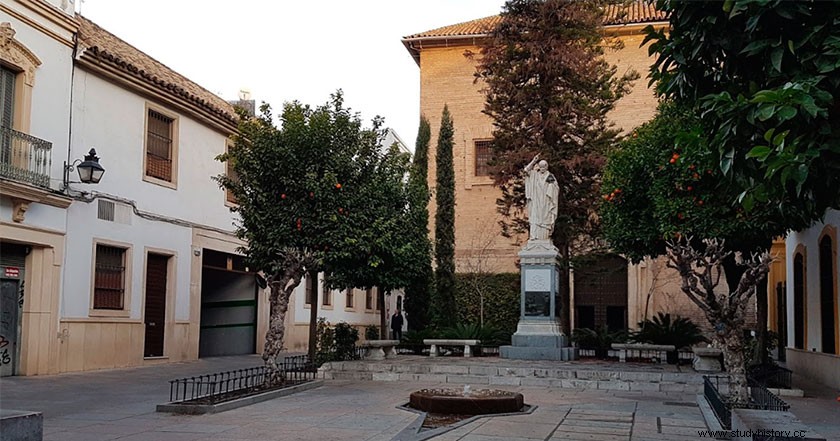
Plaza de Capuchinas in Córdoba is not one of the most frequented, neither by the Cordovans themselves, nor by the large number of tourists who come to this city attracted by its important Cultural Heritage. Precisely on the north side of the rectangle that draws said square, the figure of Osio de Córdoba appears, a character of great importance for the future of the Lower Roman Empire. This statue far from the tourist circuits, does not receive even a tiny part of the visits that the worn foot of Maimonides receives, without going any further. He who, sees how every day hundreds or thousands of tourists approach him, with the healthy intention of touching him to be able to return to the city of Guadalquivir one day.
An important paragraph before getting into the matter, to corroborate the widespread opinion that the city of Córdoba does not dispense the same importance to the different historical periods, when it comes to promoting its rich heritage.
On this aspect we must point out that there were three periods, where the Andalusian city shone with greater intensity. The first of them was its Roman period, where it became the capital of the Roman province of Baetica. Then, its caliphal period where it will become one of the most important cities in the world. Finally, the beginnings of the Modern Age, where the Catholic kings chose it as their summer residence, to continue with the Christian reconquest of the Iberian Peninsula. That said, it should be noted that the last two periods have become the main focus of tourist visits, it is only necessary to remember the mosque-cathedral or the Alcázar de los Reyes Cristianos, while the Roman period of the city remains much further away from the named tourist circuits of Córdoba.
This article has the healthy intention of making this character, Osio de Córdoba, an illustrious Roman who emerged from the capital of Baetica, a little better known.
A long life in defense of Christianity.
Osio de Córdoba was born into a wealthy family of Christian tradition, most likely in “Corduba” Roman. His enormous longevity, more than a hundred years, served him to be an exceptional spectator of one of the greatest transformations in Roman society. Since, he was born in the middle of the period of persecution against the Christian community, and died when Christianity held high levels of power as advisers to the emperors themselves. But as we will see, Osio de Córdoba was not content with being a mere spectator, since he became one of the main characters of said transformation, if not, he was present in all the main places where it took place. Q> 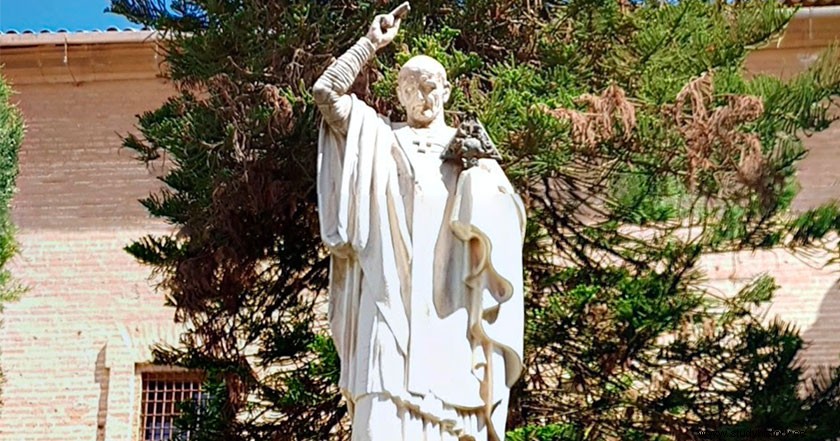
Bear of Cordoba
It seems that the period of persecution would mark his future policy of defending Christianity. In the year 295 he became Bishop of Córdoba, to immediately suffer in his own flesh, the Christian persecutions that occurred during the period of the tetrarchy, and with Maximian as western emperor of the Empire. These, questioned by some historians, seem to be corroborated by a letter addressed some years later, to the declared Arian and Emperor Constantius II (337-361):
“I already confessed Christ once, when your grandfather Maximiano provoked persecution. And if you persecute me, I will soon suffer everything, rather than shed innocent blood and be a traitor to the truth”
Although it is difficult, we must abstract ourselves from the religious vision of the life of Bishop Hosius, to better understand his facet as a reformer of the society of the Lower Roman Empire, without a doubt his participation in the events of vital importance in the fourth century thus determine it for us.
Council of Elvira (300 or 303)
We are facing the first meeting of bishops of Baetica in the history of this Roman province. It was held in the city of Iliberris, Today its location is unknown, but it is supposedly located below the Barrio del Albaicín in Granada. From this council emerged the 81 canons that would regulate the practice of the Christian religion, for a long period of time. Among the most outstanding aspects, the practice of the sacraments, baptism, communion or burials was regulated, in addition to relations with the rest of the religions of the Empire, especially the Jewish and the pagan.
But one of the most significant aspects would be the recognition of a new key figure in Roman cities, the bishop. For this, access to the highest positions of the clergy was regulated, avoiding the arrival of the rich Roman families, in order to preserve the religiosity of the members of the Christian church. The bishops were forbidden to practice trade or finance, all in order to become social examples. Since after the Council of Elvira, these bishops will become the most representative power of the cities, due to the abandonment of the same during the Lower Empire, of the rich Roman aristocracy on their way to the great villas of the late Roman countryside. The bishops will take part in municipal management, beyond their ecclesiastical work, in aspects such as the economy, politics or the regulation of family life of the Romans.
Edict of Milan (315)
According to the documents of the Emperor Constantine, at the beginning of the year 313, Hosius of Córdoba was in the court of the Emperor, in charge of advising the same, regarding religious matters . Hence, he was the one chosen to prepare the meeting in Milan, which was to address the problems arising from the continuous persecution of Christians. In short, at that time it is estimated that at least 10% of the population could profess the Christian faith.
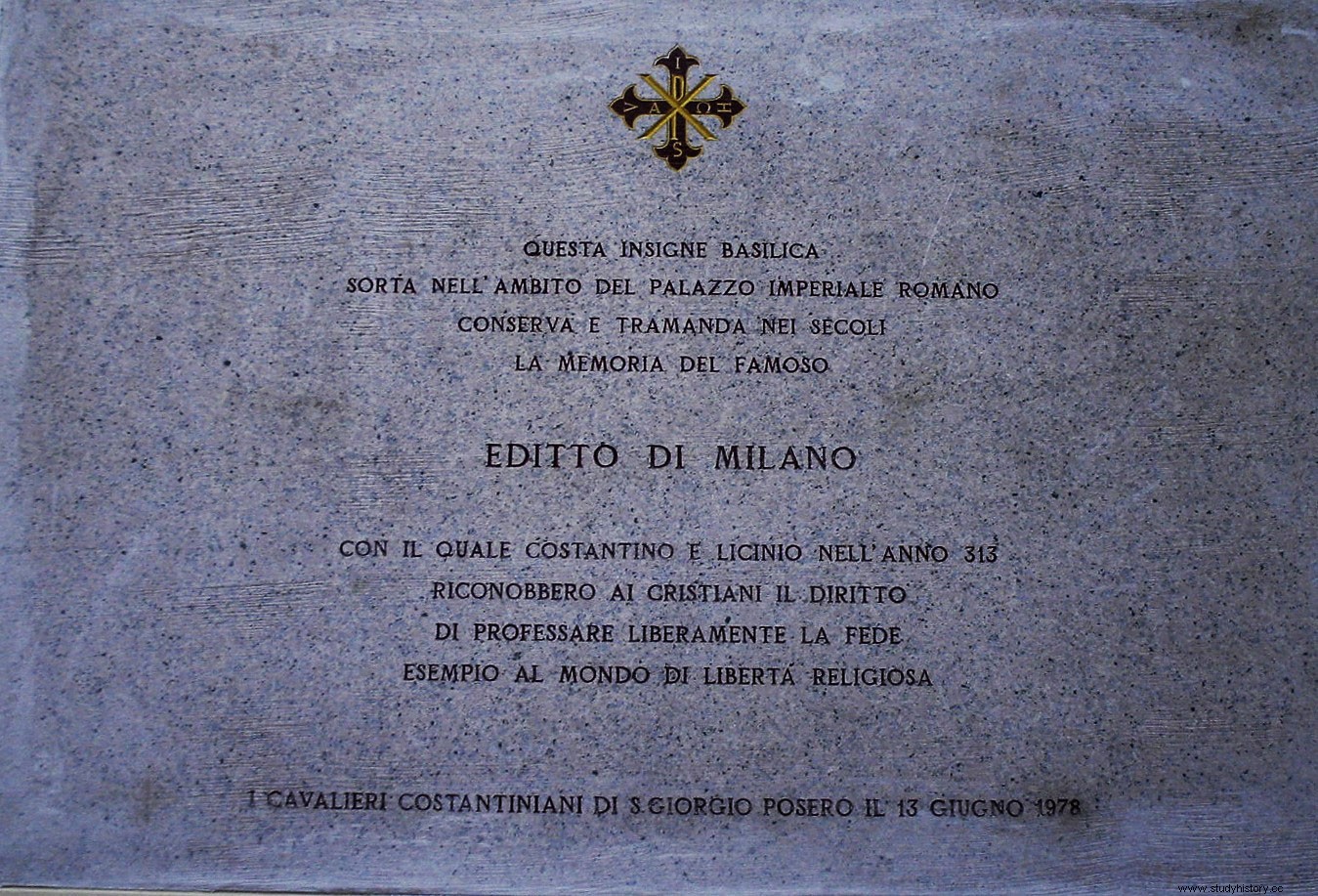
Commemorative plaque of the Edict of Milan.
Among the agreements reached, and endorsed by the two emperors Constantine of the West and Licinius of the East, were the following benefits for the Christian church:
- Restitution of all the goods that were stolen from them during the period of persecution, by the Empire.
- Possibility of increasing your wealth by accepting donations.
- Immunity for Christian priests accustomed to persecution.
- Freedom to assemble and build their own temples.
It is evident that the Edict of Milan will lay the foundations for the expansionism of Christianity throughout Europe, Osio de Córdoba was behind these concessions.
First Council of Nicaea (325).
The freedom of assembly achieved in Milan was used by Constantine and Hosius of Cordoba to promote the first Universal Council of the Christian Church. The chosen place was the city of Nicaea, very close to Constantinople, the city founded a few years earlier by the Roman emperor. In the spring of the year 325, about 1,800 bishops from all over the Empire were invited, although it is estimated that only about 300 attended. Constantine put at the service of the bishops all possible facilities, including the possibility of using the Imperial post service.
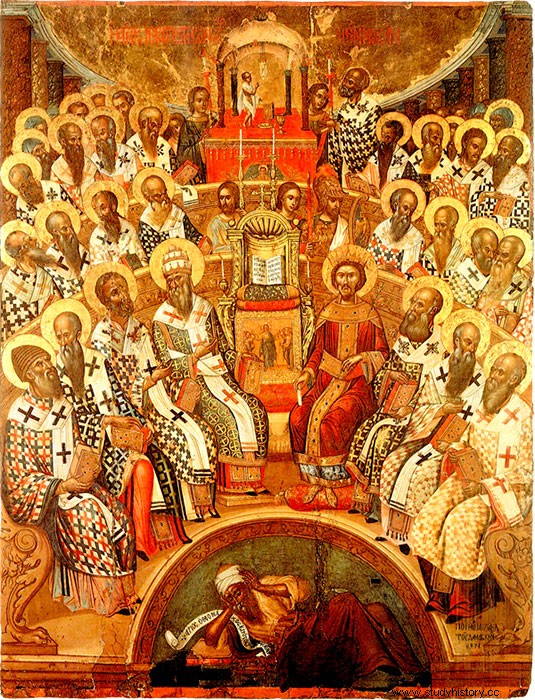
Council I of Nicea
Two main consequences arose from the months that the bishops met in Nicaea, with Osius of Cordoba as the main overseer. In the first place, the declaration as heresy of Arianism, the doctrine promoted by Arius, the bishop of Alexandria with a different vision on the Trinitarian issue. The second of them, undoubtedly the most important, the Nicene Creed will lay the foundations for the union between the states and the church, in such a way that they will become indivisible from that moment and until the arrival of the states in the 19th century, with kings as representatives of God on earth.
Death of Constantine I
Constantine died in 337, at the same time that his most faithful religious representative would be ostracized. After the death of the first emperor who declared himself a Christian at the hands of Osio de Córdoba, little more is known about the last years of the life of this illustrious Cordovan. The rest of his life was spent in his city, Córdoba, and the Eastern Empire where he continued to fight to establish the Nicene Creed, against the increasingly plausible extension of heretical Arianism. He finally died in Sirmium, the important Roman city in the province of Pannonia.
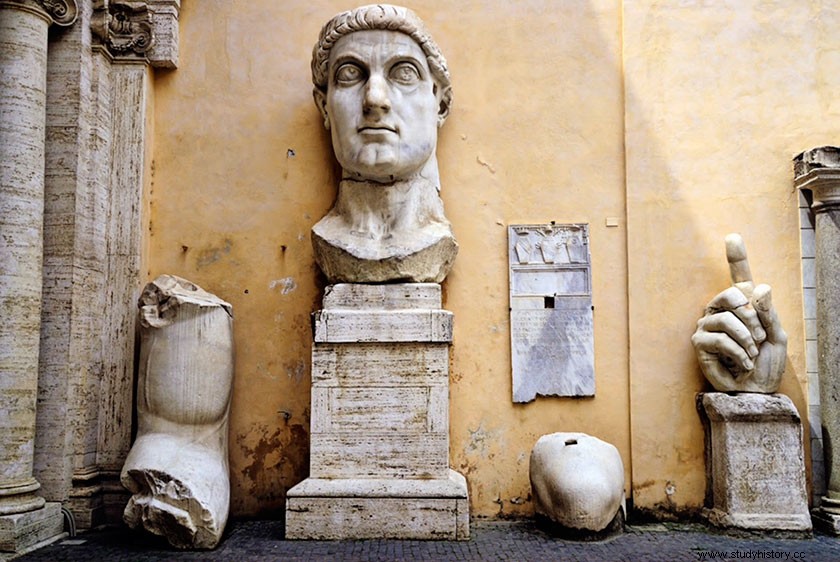
Impressive sculpture of Constantine the Great
Today current historiography analyzes the causes of the low historical importance of this character. Undoubtedly, the partial failure of his Nicene theses may be behind this aspect. If with Nicaea he sought the state-church union to strengthen the Roman Empire in a unitary way, he did not achieve it. The Empire was divided almost definitively, except with Theodosius, in the West and East, as well as the religious aspect with the triumph of the Arian thesis, especially in the eastern part of the Empire. All that was missing was his embrace, difficult to understand, of Arianism in his last days to enter into ostracism, both in the East and in the West, especially in the Middle Ages.
We will have to wait for the 20th century at the hands of his counterpart, Adolfo Pérez Muñoz, who will inaugurate the statue made by Lorenzo Coullaut Valera in 1926. In this way The tribute arrived for this man, who from his Christian vision tried to revive a Western Roman Empire in continuous decline .
Hosius of Córdoba, the Empire and the Church of the fourth century, José Fernández Ubiña, pp. 441-473
cordobapedia
